Whether you are having it as a comfort food or a snack, here is a 20 minute quick and easy delicious tteokbokki recipe made with Korean chewy rice cakes cooked in a sweet and spicy gochujang sauce that can be enjoyed all year round.
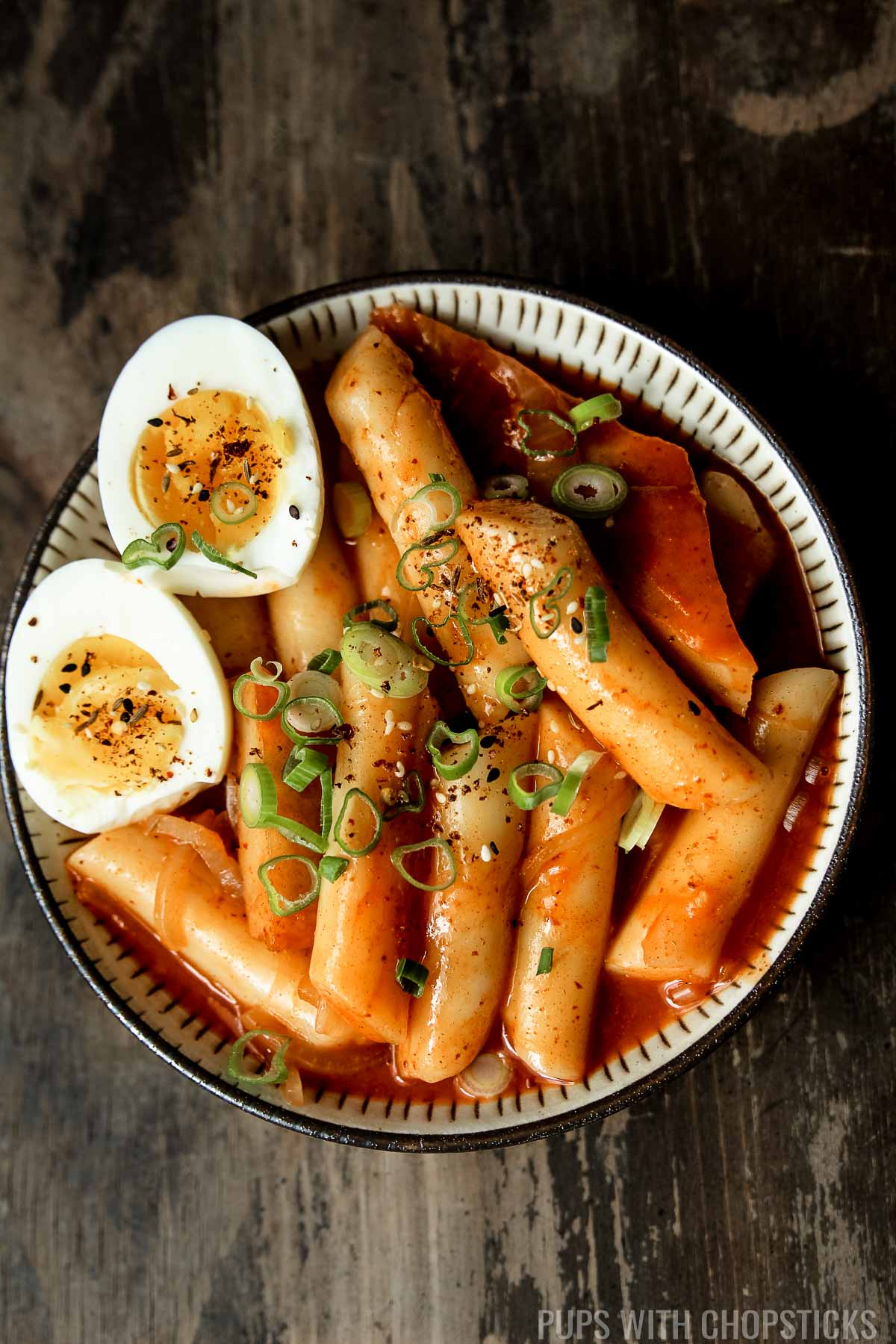
This easy Korean spicy rice cake dish is cooked in a spicy, sweet, and savory sauce made with gochujang and anchovy broth but the highlight of tteokbokki is the satisfying, chewiness of the rice cakes. The rice cakes are made with rice flour which is steamed and kneaded and pounded to give it its trademark chewy texture.
If you're looking for a less saucy rice cake recipe, I also have a delicious chewy Stir-Fried Kimchi Rice Cake recipe made with thinly sliced rice cakes, kimchi, and pork shoulder.
I also like to make a quick and easy 5-minute Korean cucumber salad (Oi Muchim) to serve with tteokbokki to cut some of the spicinesses and to have a refreshing side dish (banchan) to eat as well.
What is Tteokbokki?
In Korea, tteokbokki (ddeokbokki) is a very popular Korean street food that is made with chewy Korean rice cakes (garaetteok), gochujang chili paste, and Korean fish cakes.
There are many different variations tteokbokki, some are made with vegetables like cabbage and carrots, and others like to enjoy it with boiled eggs, ramen (rabokki), creamy tteokbokki made with cream (rose tteokbokki) or cheese (cheese tteokbokki).
Ingredients for Tteokbokki
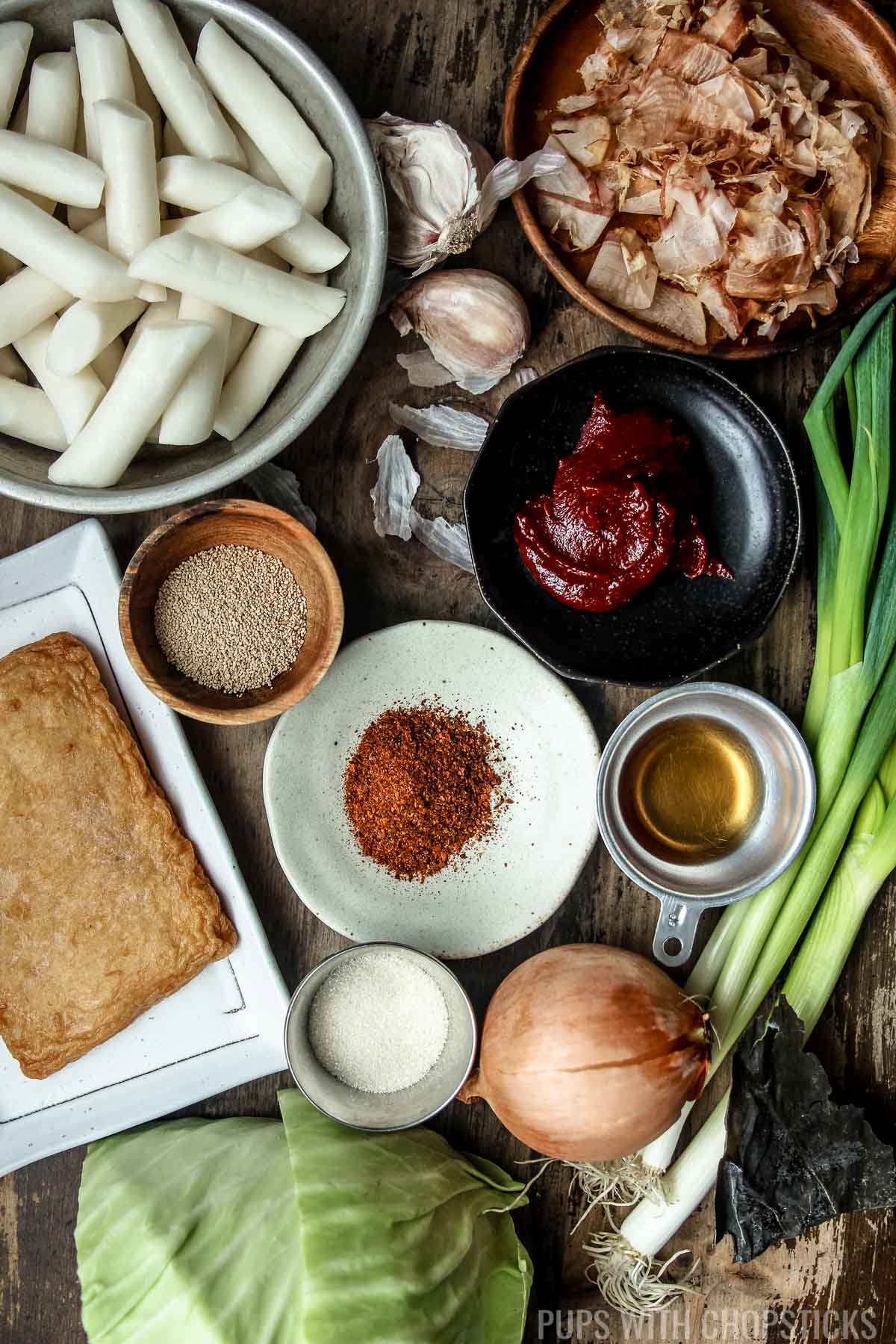
- Rice cakes (garaetteok) - When you are buying Korean rice cakes (garaetteok), try to find cylindrical ones shaped like tubes. You can buy them fresh or frozen at Asian grocery stores but they are most common in Korean grocery stores.
- Fish Cake - Traditionally, flat fish cake sheets are used, but you can use fish balls if you cannot find them. They can be found fresh or frozen at any Asian grocery store.
- Gochujang (Korean chili pepper paste) - This is one of the main ingredients in this dish and it cannot be substituted or omitted. Gochujang gives the sauce its signature sweet and spicy flavor.
- Gochugaru (Korean chili flakes) - This ingredient is what I use to adjust my spiciness level. Use less (or none) for a mild spiciness and use more for a more spicy dish. Both gochujang and gochugaru are most commonly found in Korean supermarkets but you can also buy it online as well.
- Hondashi Dashi Powder - For additional umami, I like to add dashi powder to my broth. It provides the broth with a hint of smokiness. It is also the main source of sodium for this dish. If you cannot find this, you can substitute it with soy sauce.
- Bonito Flakes - I add this smoky fish flake instead of dried anchovies to my broth because I find it has a bit more flavor and it adds a nice light smokiness to the dish. It is also easier to find and store. If you cannot find this, you can omit it.
- Toasted Sesame Oil - This ingredient adds a lot of flavor to the dish. Add it at the end after you turn off the heat to retain its flavor.
- Dried Kelp - Adding dried kelp into the broth will give it an umami boost. If you can't find it, you can omit it.
- Garnishes - I like to garnish this dish with finely chopped green onions and toasted sesame seeds right before eating it.
Joyce's Tips For the Best Tteokbokki
- Once you start simmering the rice cakes in the sauce, it's important to keep stirring it so that it doesn't stick to the bottom of the pan.
- If you are not using fresh rice cakes, and you are using frozen ones, soak them in warm (not hot) water for 10 minutes before using them.
- To keep the rice cakes chewy, don't overcook them. Once the sauce has thickened and the rice cakes are soft, remove them from the heat.
- If you add carrots or cabbage in, it will take longer to thicken the sauce.
Tteokbokki Sauce
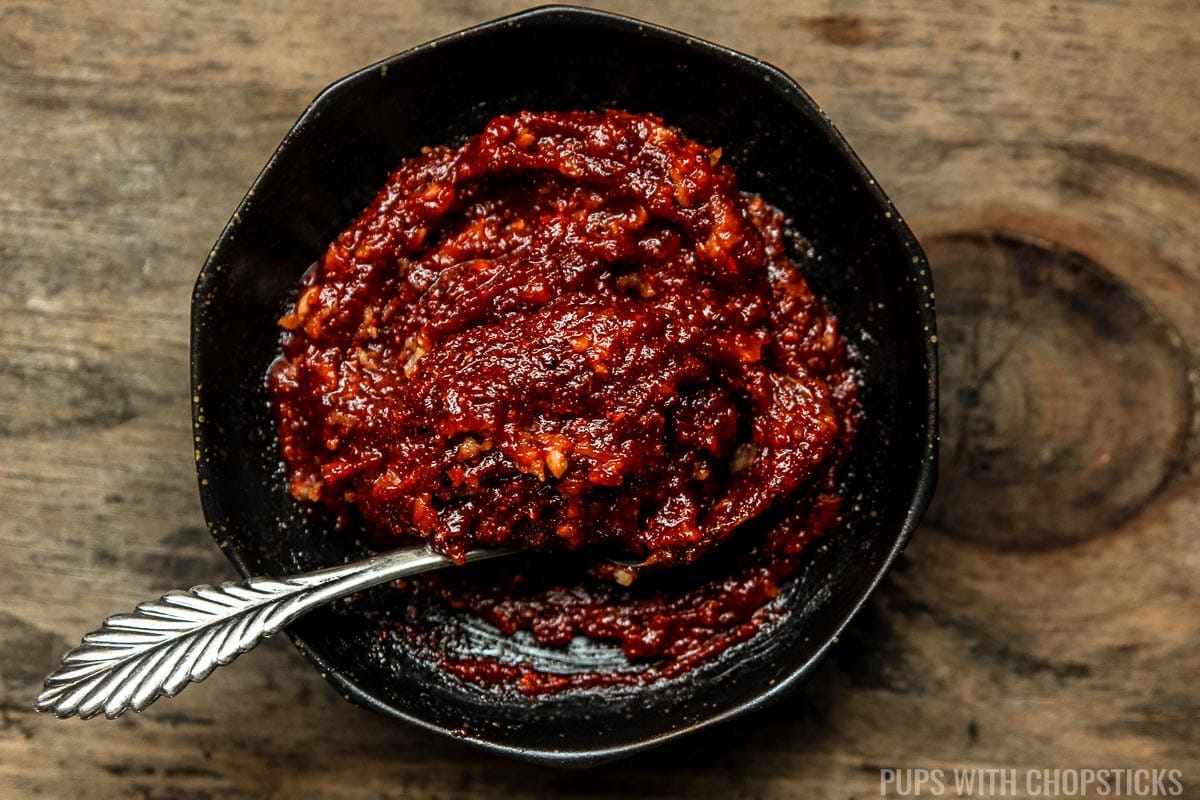
My version of Tteokbokki sauce is made with gochujang, gochugaru, sugar, and garlic. I don't add soy sauce to it because I add the sodium into the dish with hondashi dashi powder, which you use when making the stock.
If you are not using hondashi dashi powder, then I would definitely add soy sauce to the tteokbokki sauce. The sauce should be sweet, spicy, and savory.
To tweak the spiciness of this tteokbokki recipe, adjust the amount of gochugaru chili flakes.
- mild = 0-1 teaspoon
- medium = 2 teaspoons
- spicy = 3+ teaspoons
How to Make Tteokbokki
- Slice the onions and chop the fish cakes into small pieces and set them aside.
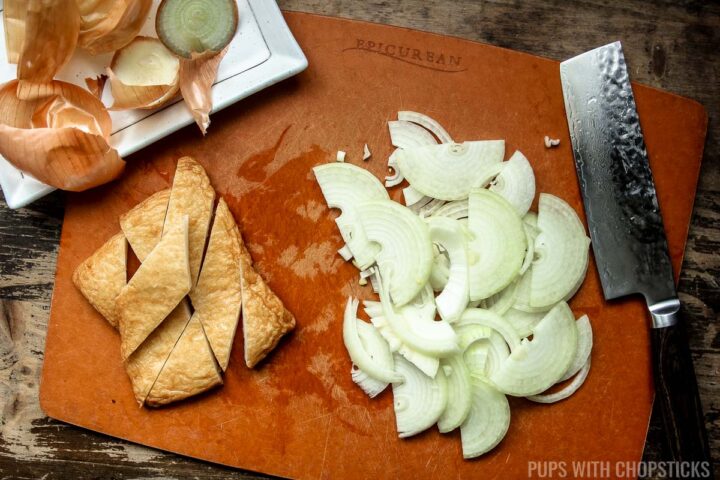
- Mix the gochujang, gochugaru, sugar, and finely chopped/grated garlic together in a small bowl and set the sauce aside
- In a shallow pan, boil water on medium heat. Add in the kelp, bonito flakes, and dashi powder and boil for 5 minutes to make a dashi stock.
- Scoop out the bonito flakes and kelp and discard them.
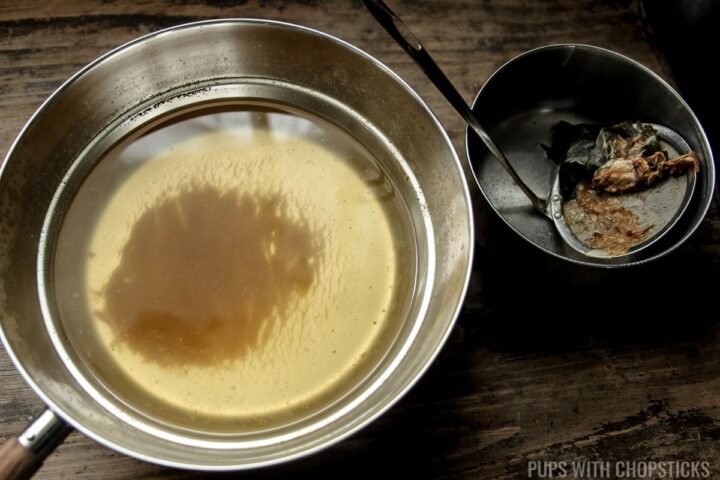
- Add in the tteokbokki sauce, onions, and rice cakes and cook it for 5 minutes
- Add in the fish cakes and cook for another 5 minutes until the sauce has thickened into a glossy sauce
- Turn off the heat, drizzle in the sesame oil and garnish with toasted sesame seeds and/or green onions and enjoy!
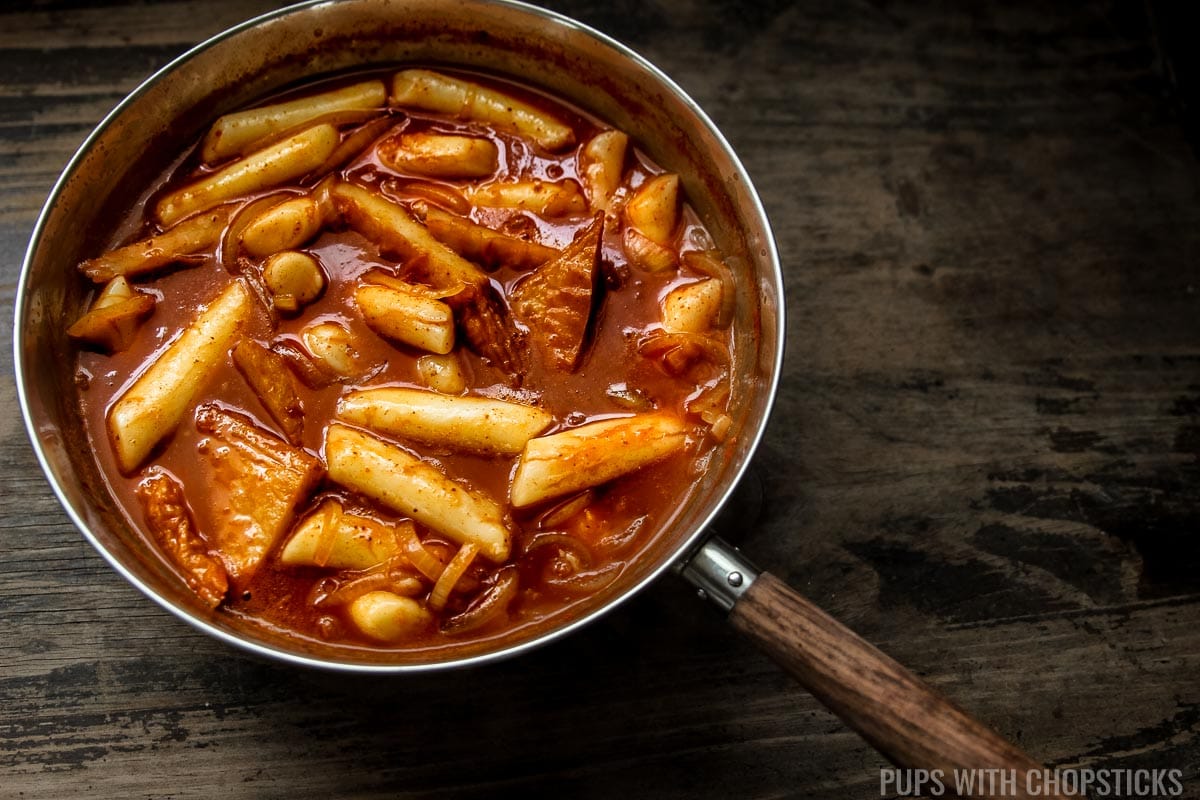
How to Make Tteokbokki Sauce Thicker
To make tteokbokki sauce thicker, cook the rice cakes in the sauce longer. The starches from the rice cakes will eventually thicken it.
My prefered method is to use a cornstarch slurry so that you don't overcook the rice cakes. Mix 1 tablespoon of cornstarch with 1.5 tablespoons of cold water and slowly pour it into the sauce while quickly stirring until the sauce thickens.
Spicy Korean Rice Cakes Variations
If you're looking for something different, try switching up the add-ins to your tteokbokki!
- Protein - For a bit of protein, you can add in hot dogs, seafood, dumplings, spam or soft/medium-boiled eggs.
- Cheese - Add some shredded or processed cheese slices on top right before serving it for some extra creaminess. If you like the cheese stretch, add mozzarella.
- Vegetables - You can add a cup of cabbage and/or carrots to give your Korean rice cakes a bit more bulk and food to eat.
- Ramen - You can make this a heartier meal by adding some cooked ramen noodles to it. It's actually a whole new dish called Rabokki!
- Kimchi - Try adding some chopped kimchi in to make it a kimchi tteokbokki! It's delicious!
- Rose Tteokbokki - Add some cream to the sauce to make it super creamy and delicious!
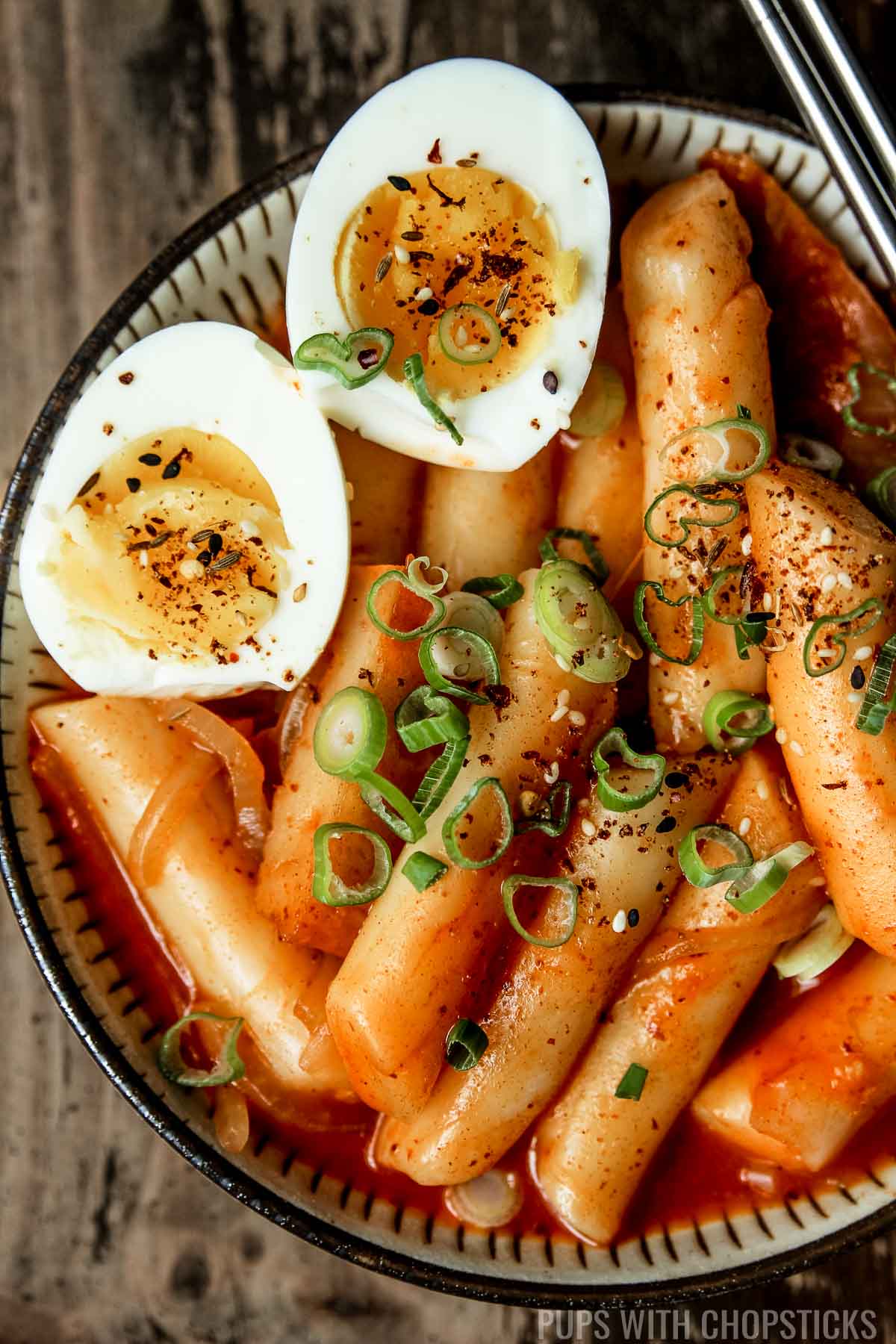
FAQs
These Korean rice cakes are made with rice flour and salt.
If you buy them from the refrigerated section, they should have an expiration date on them. You can freeze them if you can't use them all. You can also buy them frozen which will last for at least 6 months in the freezer.
You definitely can! If you can thinly slice some raw meat and cook it with the rice cakes for about 10 minutes or you can use leftovers!
You can find them in Korean, Japanese, and sometimes Chinese supermarkets in the refrigerated or freezer section. I do not recommend buying them online.
Try cooking the rice cakes in the sauce for longer. The starch from the rice cake will thicken the sauce naturally. If you want the sauce thicker, you can use a corn starch slurry. Mix 1 teaspoon of corn starch with 1 teaspoon of cold water and slowly mix it in while constantly stirring.
I would say it's about mild to medium spicy. You can adjust the spiciness level by adjusting the amount of gochugaru you put in it.
You can use soy sauce instead of hondashi, and you can omit the bonito flakes, you will only lose out on the smoky seafood flavor.
Add more water and cook the rice cakes until they are soft.
How to Store and Re-Heat Korean Rice Cakes
Tteokbokki can be kept in the fridge for up to 3 days. Once it is refrigerated, the rice cakes will get hard.
It will take some extra time in the microwave to soften it. Keep in mind that the rice cakes will not be as chewy as when they were fresh so it is best enjoyed the same day it was cooked.
When you are microwaving it, if the sauce looks very thick or there is no sauce, mix a bit of water in before you heat it up. Try to separate the rice cakes before you re-heat them so that they will heat up more quickly and evenly.
You can also reheat it over the stovetop as well over medium-low heat. You may need to add additional water to it if the sauce gets too thick.
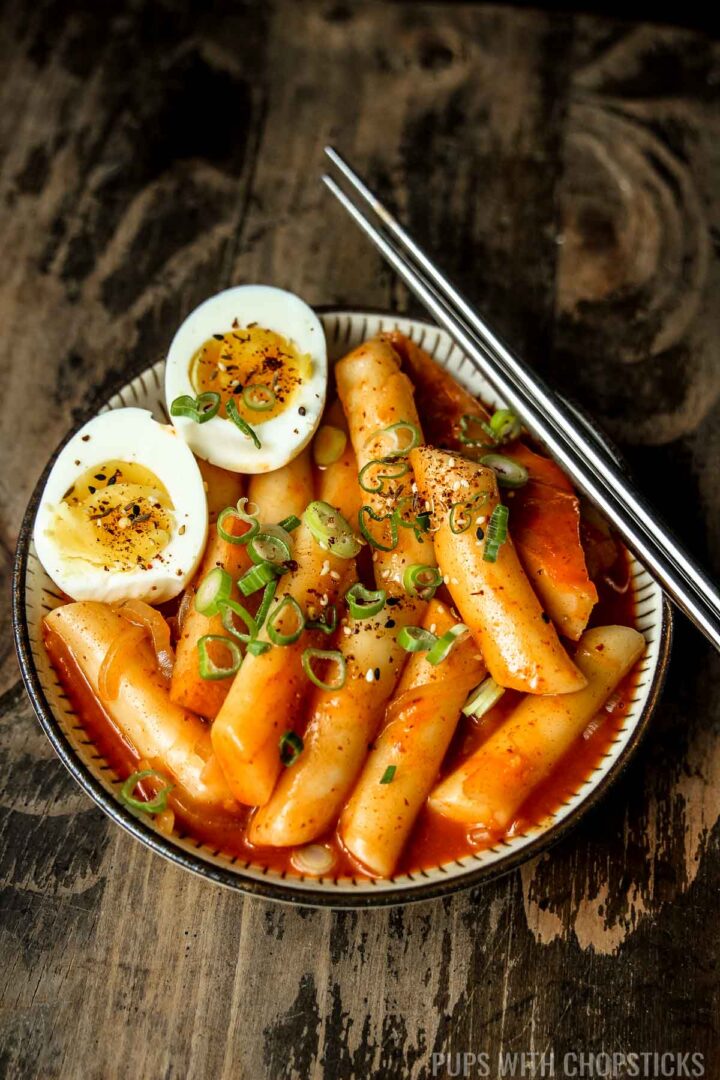
More Korean Recipes You May Like
- Easy Japchae (Korean Glass Noodles Stir Fry)
- Kimchi Fried Rice with Spam
- Spicy Pork Bulgogi (Classic Jeyuk Bokkeum Recipe)
- Easy Soondubu Jjigae Recipe (Spicy Korean Soft Tofu Stew)
- Korean Corn Cheese (Elote Style)
- Tuna Mayo Deopbap (Korean Tuna Rice Bowl)
- Easy Stir-Fried Rice Cakes (15-Minute Recipe!)
- Korean Fried Popcorn Turkey Nuggets
If you like my recipes and want to be updated on when new ones come out, please consider subscribing to my newsletter (we don't spam) and follow along on Instagram, Facebook, and Pinterest for all of my latest recipes!
Recipe Card
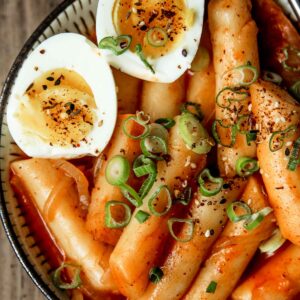
Tteokbokki (Spicy Korean Rice Cakes)
Joyce's Recipe Notes
- To tweak the spiciness of this tteokbokki recipe, adjust the amount of gochugaru chili flakes.
- mild = 0-1 teaspoon
- medium = 2 teaspoons
- spicy = 3+ teaspoons.
- I highly recommend using hondashi dashi powder but if you can't find it, substitute it with 2 tablespoons of soy sauce.
- If you cannot find bonito flakes or kelp, omit it - you will only lose a bit of umami from the kelp and smoky flavor from the bonito flakes.
- To keep the rice cakes chewy, don't overcook them. Once the sauce has thickened and the rice cakes are soft, turn off the heat.
- If you cannot find fish cakes in sheet form, you can use fish balls instead.
- If you add cabbage or carrots, it will take longer to thicken the sauce.
Ingredients
- 1 lb rice cakes (garaetteok) (tubular shaped, approx. 2.5 cups)
- 1 sheet fish cake (or 4-5 fish balls)
- 1 small onion (finely sliced, approx. ½ cup)
- 1 teaspoon sesame oil (added after turning off heat at the end)
Broth Ingredients
- 3 cups water (Use 3½ cups for a more saucy tteokbokki)
- 1 piece kelp Optional for more umami. (3x3 inches)
- 1½ tablespoons hondashi dashi powder (or 2 tablespoons of soy sauce, or shiro dashi)
- ½ cup bonito flakes
Tteokbokki Sauce
- 3 tablespoons gochujang (Korean hot pepper paste)
- 2 teaspoons gochugaru (Korean red chili pepper flakes) (see notes for heat levels)
- 1 tablespoons sugar
- 2 cloves garlic (finely chopped, approx. 1 tablespoon)
Additional Add-ins (Optional, Pick One)
- 1 cup carrots and cabbage (shredded)
- 1 cup shredded cheese or American cheese slices (add on top right before eating)
- 3 eggs (soft or medium boiled)
- hotdogs or leftover meat
- ¼ cup kimchi (roughly chopped)
Garnishes
- toasted sesame seeds
- green onions
Instructions
Preparation
- Peel and slice the onion and set them aside
- Cut the fish cakes into small pieces and set them aside
- If you are using green onions as your garnish, finely chop it and set it aside for the end
- If you are using any add-ins, prepare them now (ie. grate the cheese, boil the eggs)
Make the Tteokbokki Sauce
- Finely chop or grate the garlic.
- Mix the gochujang, gochugaru, sugar, and garlic together in a small bowl and set the sauce aside
Make the Broth
- In a shallow pan, boil water on medium heat. Add in the kelp (optional), bonito flakes, and dashi powder and boil for 5 minutes. If you are not using hondashi dashi powder, 2 tablespoons of soy sauce instead.
- Scoop out the bonito flakes and kelp and discard them
Cooking the Tteokbokki
- Add in the tteokbokki sauce, onions, cabbage and carrots (optional), and rice cakes, and cook for about 5 minutes. Once the sauce starts to simmer, it's important to keep stirring it so that it doesn't stick to the bottom of the pan.
- Add in the fish cakes and cook for another 5 minutes until the sauce has thickened into a glossy sauce.
- Do a taste test and adjust the sauce to your liking. Then try a rice cake, they should be soft and chewy. If they are still hard, continue to cook for a few more minutes.
- Turn off the heat, drizzle in the sesame oil and garnish with toasted sesame seeds and/or green onions and add in any add-ins. If you are adding cheese, add that on top to melt it as well. Enjoy!
Nutrition
*Nutritional information is calculated using online tools and is an estimate*
Disclaimer: We are a participant in the Amazon Services LLC Associates Program, an affiliate advertising program designed to provide a means for us to earn fees by linking to Amazon.com and affiliated sites. While I appreciate the support – please try to buy your items locally if possible to support your local shops (chances are they are cheaper locally as well!)

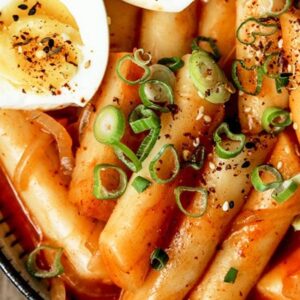
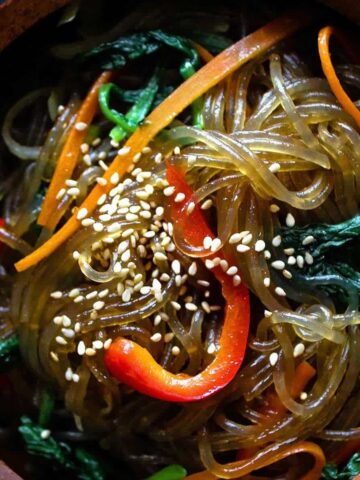
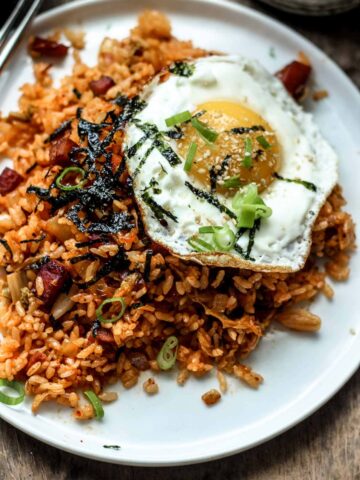
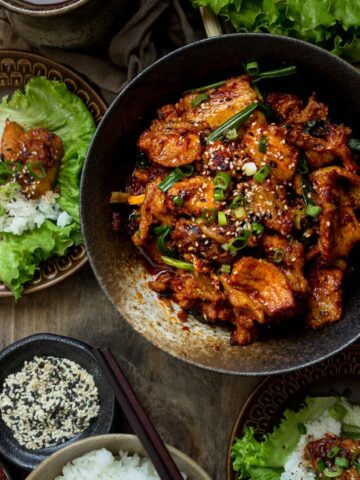
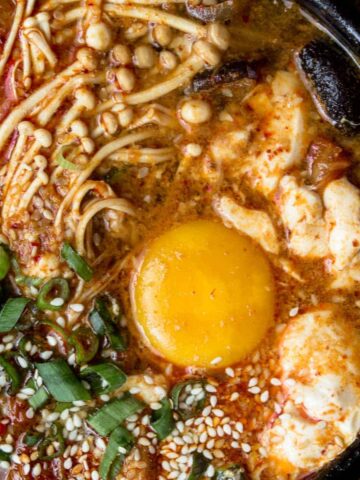

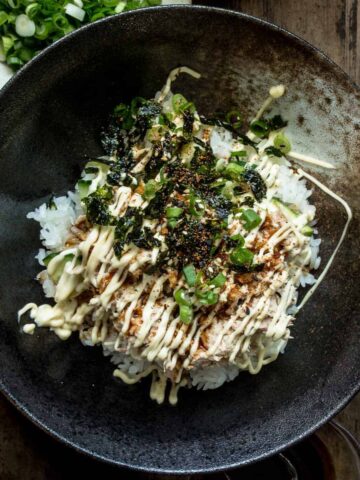
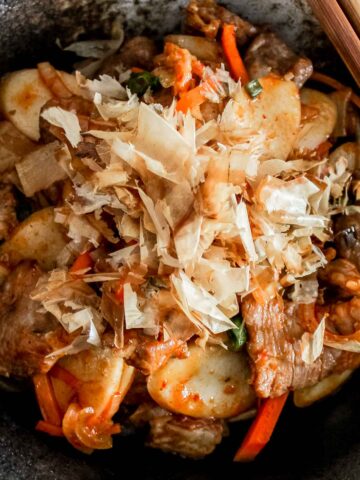
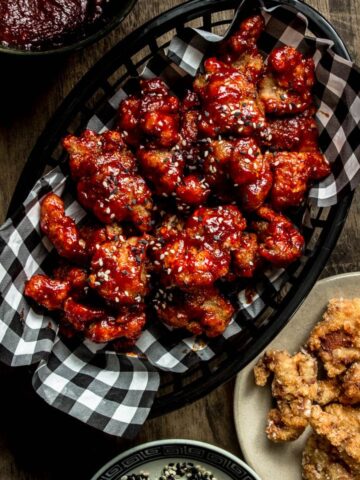
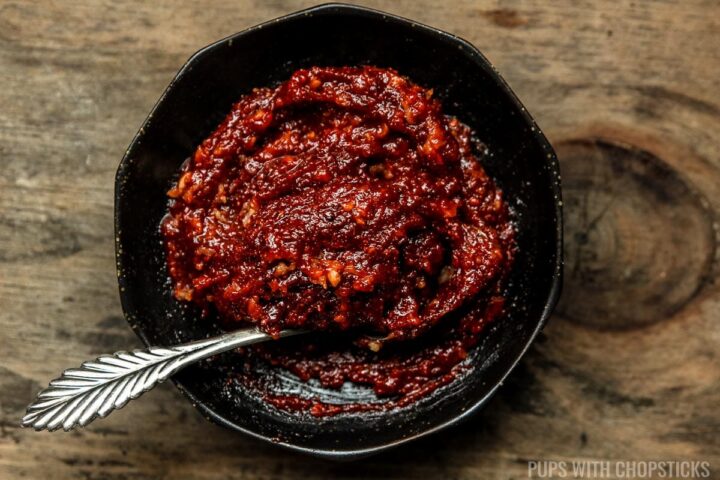
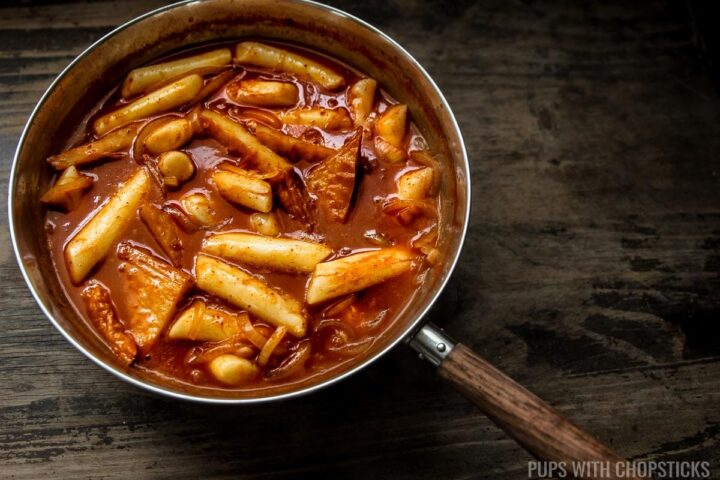
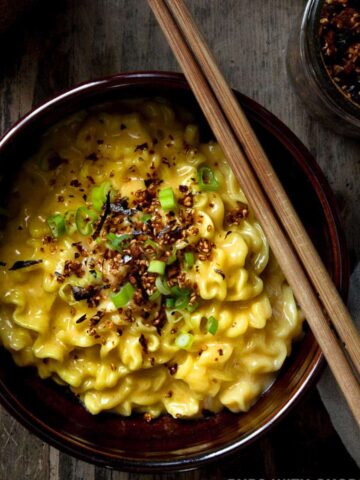
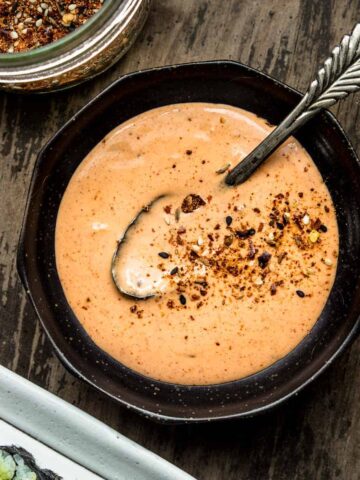
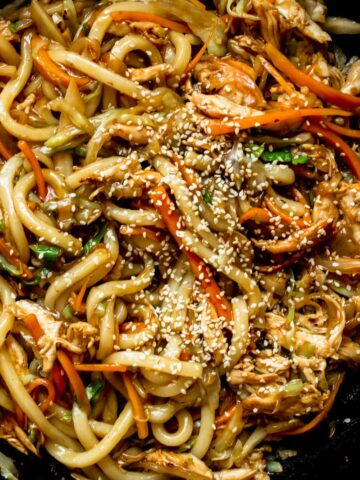
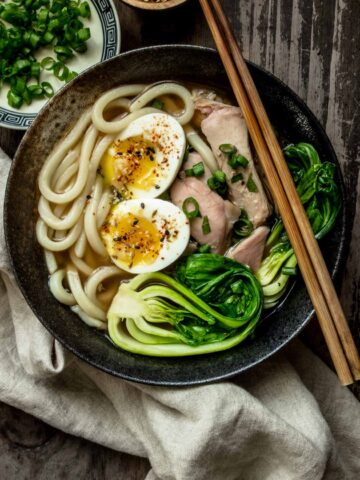
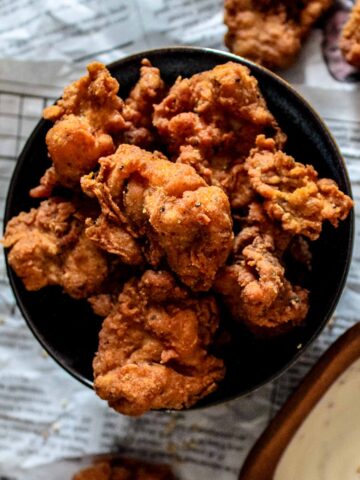
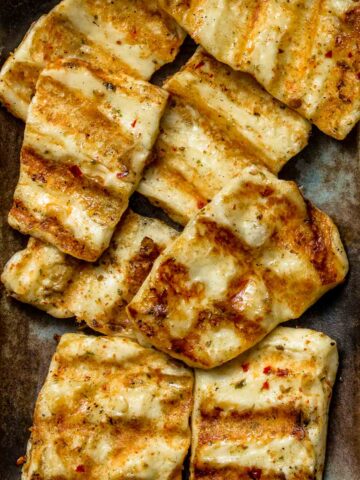
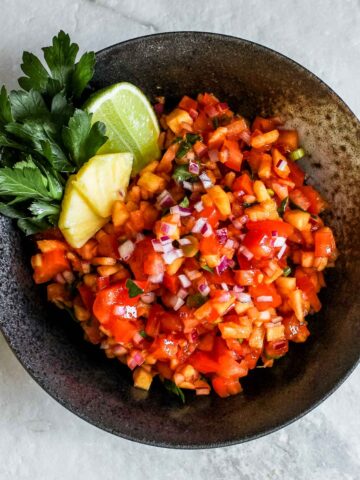
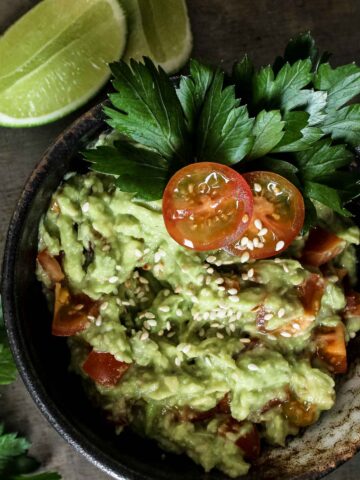
Josie says
The rice spring rolls is healthy in terms of ingredients veggies mix. I am going to make this dish as a snack treat for my family, Everyone for sure will give me a 👍 thumb-up. Thank you.
Joyce Lee says
Hi Josie,
Hope everyone likes it!
Jamie says
This looks so good and flavorful with that spicy sauce! Saving this for later to make for my niece this weekend!
Joyce Lee says
Hi Jamie,
Hope you both like it!
Nathan says
Tteokbokki is something I've never had but I've always wanted to try, and I didn't know it was so simple to make! I definitely can't wait to give this a try, thanks so much for the recipe!
Joyce Lee says
I'm very happy to share! It's definitely very easy to make, one of the reasons why I love having it as a quick and easy meal when I am feeling lazy! haha I hope you enjoy it!
Kate says
So glad I tried this tteokbokki recipe. The flavors were out of this world and I find your instructions were also absolutely easy to follow.
Joyce Lee says
Hi Kate!
So happy this turned out for you and you liked it!
Lima Ekram says
Love the sweet yet spicy sweet and spicy gochujang sauce! Yummy!
Joyce Lee says
Hi Lima,
Me too! It's an awesome combination!
Vicky says
How spicy would you say this dish is? I want to adjust it for my kids who are not fans of spice. I am excited to try this as we love Korean street food! A few restaurants near me have it, but it would be great to make it on my own.
Joyce Lee says
Hi Vicky,
I would say this dish is about medium spiciness. You can put less gochujang in but it may make it less flavorful. Hope that helps and hope everyone enjoys it!